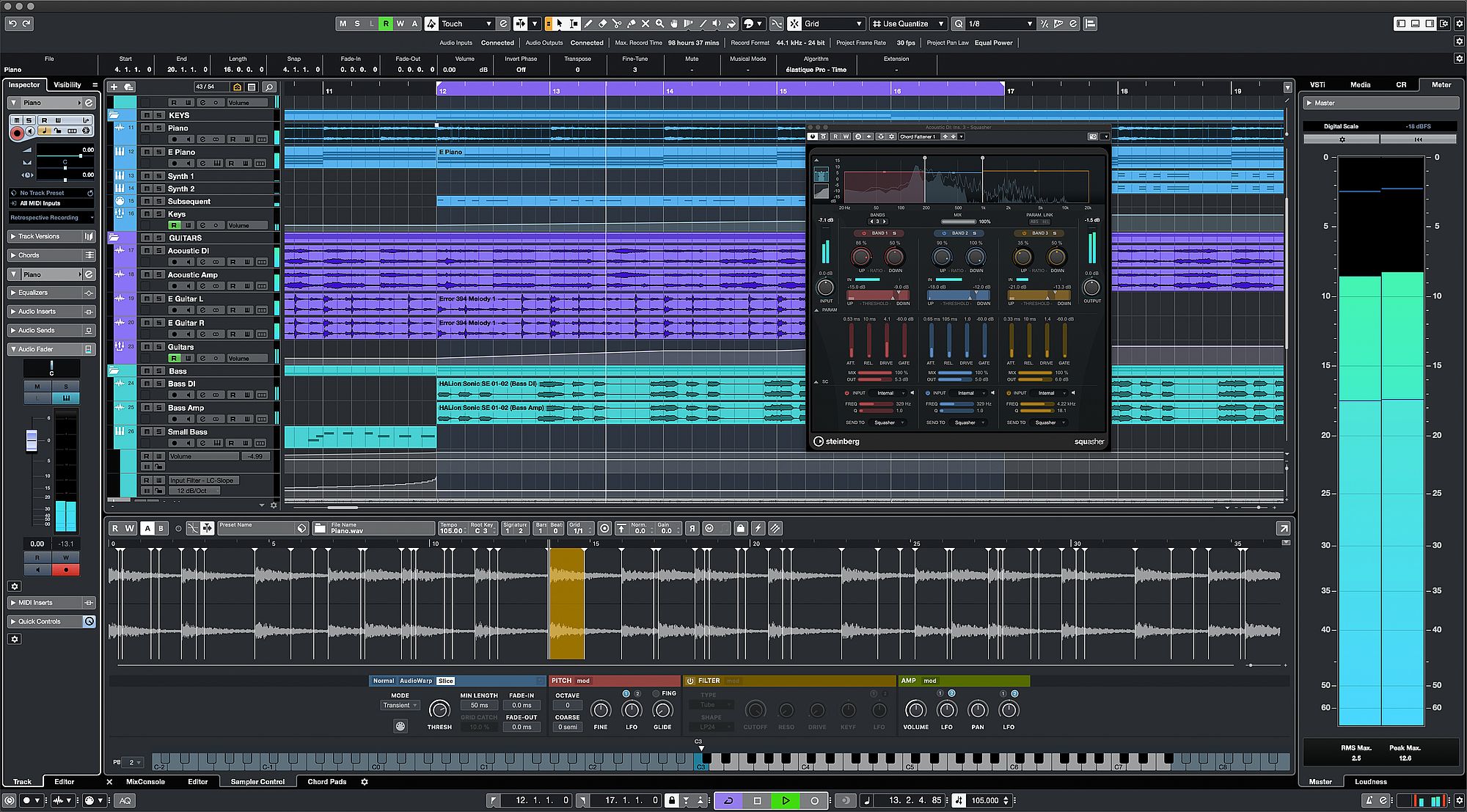

I highly recommend checking it out if you are a composer or use notation software at all. Dorico is sleek, powerful, and quite easy to use.
#Dorico cubase update#
This latest update brings a lot of cool tools to an already robust feature set.

If you haven’t tried Dorico yet, this version is a great time to jump in. Once I got used to it, I really dug it.įigured bass has been brought in for all you AP music theory teachers, divisi condensing adds functionality to the (already pretty awesome) conductor score generator, customized user interface with colors (ok, this was actually quite fun), and Hollywood-style parts with extra staves round out the feature set for 3.5. So you can play with a few inversions of a chord, nail down the one you like, click on a duration, and bam - the note or chord is committed and placed on your staff. Steinberg, Cubase, Dorico, HALion, Nuendo, WaveLab, VST, ASIO and other Steinberg product and technology names are trademarks or registered trademarks of. in a Pythagorean system, the interval between C and D 9:8 is 2040/12000 while B and C 256:243 is 900/12000). In my working with the program, the sizes of the intervals between the diatonic white notes are defined in terms of 12000 divisions of the octave (e.g. This takes some getting used to, but it is basically a new input method that allows you to play with notes on your MIDI keyboard before you actually solidify what you’re playing, and then commit by picking a duration. The tonality system editor in Dorico 2.1.

The third feature that is in the ‘front of my mind’ after playing with Dorico 3.5 for a few weeks is the ‘pitch before duration’ control. This makes charting out exact performances of lines for my students much more authentic and accurate. There are notations available for hammer ons, pull offs, and whammy bar pitch modulations. Some playing techniques such as guitar harmonics are not reset by 'nat.Guitar notation has been expanded, and as a guitar teacher, I’m very thankful.there isn't yet a user-controllable mechanism for specifying the priority and mutual exclusions of multiple concurrent playing techniques, or triggering different switches according to the current dynamic level.modwheel instruments sometimes don't play back with dynamics if the first dynamic change occurs after the start of the score.instruments that respond to modwheel dynamics don't yet play back accents (this is already fixed for the next update).With the Dorico playback template that you have mentioned. Objects and techniques that don't yet play back: Dorico, Finale, Sibelius, Notion, Overture, Cubase, StaffPad Win11 圆4, 64GB RAM Focusrite Scarlett 18i20 Kontakt, Bunch of VSL, VIP, VEP, EWQL Orch, Choir and Pianos August Forster 190. playing techniques such as pizz and arco which have keyswitches in the expression map should play back SOLVED: As per John Barrons response, Cubase has an 'Ignore Master Track Events on Merge' option which needs to be unticked - this will then allow existing Cubase projects to imported MIDI events.

#Dorico cubase mod#
hairpins and dynamic markings control the note velocity or mod wheel controller of instruments, according to the expression map.accent and marcato notes will increase note velocities for instruments that use note velocity for dynamic level.staccato, staccatissimo and tenuto will also shorten/lengthen the default played note length.staccato, staccatissimo, tenuto, accent and marcato articulations should trigger keyswitches/controller switches for instruments whose expression maps support them (including HSO for some instruments).Reading Steinberg forum I have seen this : Re: Dorico 1.0.10 update now availableīy PaulWalmsley » Mon 6:34 pm Current status - what to expect for playback of Playing Techniques and Expression Maps Some expressions will work, but most will not. As far as I could see the Expression Maps are still rudimentary in Dorico.


 0 kommentar(er)
0 kommentar(er)
